Light Sensors: The Absorption Spectrometer, LIDAR, and Thermal Cameras on Display at CES 2018
The 2018 Consumer Electronics Show debuted a variety of sensors. This article looks at LIDAR, microspectrometers, and Infrared cameras.
As sensors continue to flood the consumer-space, the price drops and the functionality improves. This article looks at a spectrophotometer, LIDAR, and infrared camera on display this year at CES 2018.
SCïO by Consumer Physics
The SCïO by Consumer Physics is a smartphone-linked reflectance microspectrometer with a light source by OSRAM. It scans materials in the environment and compares the reflectance spectra with a database of known spectra to provide positive identification of foods, pills, and anything else in the always-growing ConsumerPhysics database.
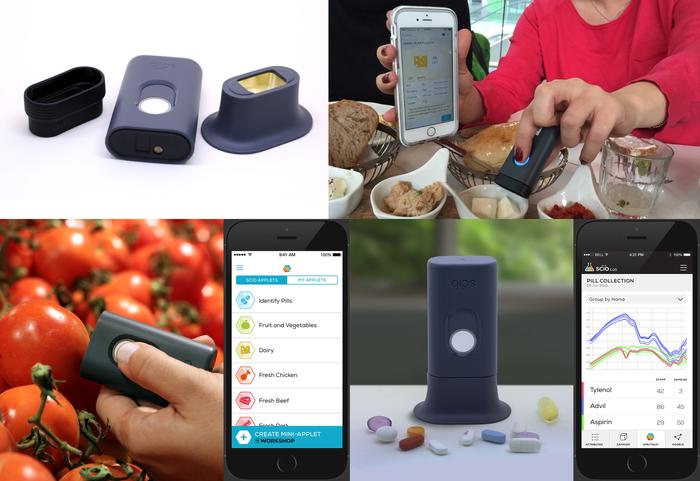
Clockwise from upper-left corner: 1) The SCïO sensor. 2) Scanning breakfast foods for nutritional value. 3) Spectra of various pills. 4) Identification of tomatoes. Image courtesy of Consumerphysics.
Any time light strikes an object, it can be absorbed, reflected, or refracted, and the behavior is dependent on the wavelength of light and the object the light is interacting with. This sensor looks at the intensity of reflected light off of the surface of an object as the wavelength of the light source in the sensor changes. By comparing the sensor spectra to a database of reference samples, the app can positively identify the sample for the user.
The applications for this technology are breathtaking. Imagine identifying drugs as they are dispensed to ensure the correct one is being given in a hospital or nursing home, determining exactly what the nutritional value of your breakfast is, or knowing that your baby formula isn't laced with melamine.
FLIR One Pro
The human eye is only sensitive to a very narrow portion of the electromagnetic spectrum that is referred to as visible light.
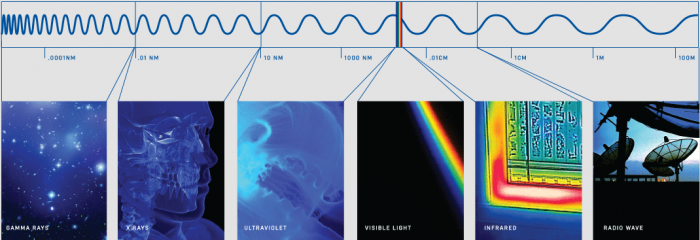
Image of various wavelength ranges and their associated names from FLIR.
Frequencies that are just below the threshold of human vision are referred to as Infrared, and the FLIR company creates cameras and sensors that detect electromagnetic energy in this region and convert it to visible light through false-color photographs.
Flir Video Wall with two science-grade FLIR cameras and an LED Matrix
FLIR has miniaturized their larger cameras and couples them with the screen and camera in Android and iPhones to provide users a way to affordably sense their environments. This is of particular interest to electrical engineers who have to deal with heat dissipation in their circuits.
You can now look at thermal heat signatures early in the design process and fix issues in-house without having to bring in expensive consultants. The sensors can also be used by homeowners to look for thermal anomalies that would remain otherwise undetectable.
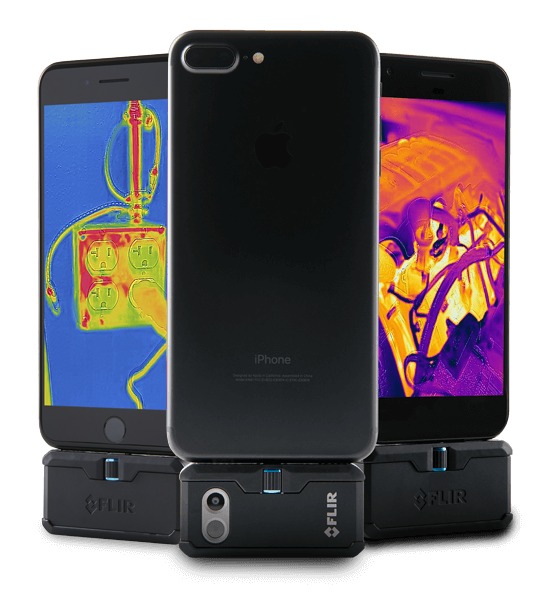
FLIR One Pro. Image courtesy of FLIR.
LiDAR
The PX-80 Mobile 3D Scanner by Occipital (formerly Paracosm) is a hand-held mechanical LIDAR unit designed for mobile, large site survey. While other LiDAR units are capable of creating large-site scans, they often have to be mounted to vehicles and have their pointclouds merged in a post-production process. The PX-80 assembles its point-clouds without relying on GPS, which allows it to be used inside buildings and structures.
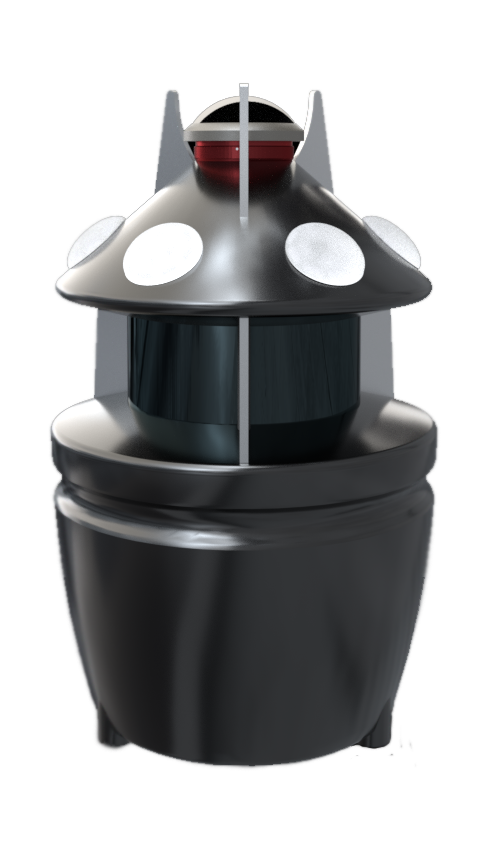
PX-80 mobile scanner from Paracosm
Innoviz debuted their solid-state LiDAR at CES 2018. With no moving parts, the unit has a restricted field of view. However, that is offset by the fact that it is a fraction of the cost of a Mechanical LiDAR unit.
Multiple solid-state LiDARs can be incorporated into an automobile to provide 360° coverage for less than the cost of a single current-generation mechanical LIDAR. With a mass-production cost of $100 per unit, these devices will soon find their way to motorcycles and drones.
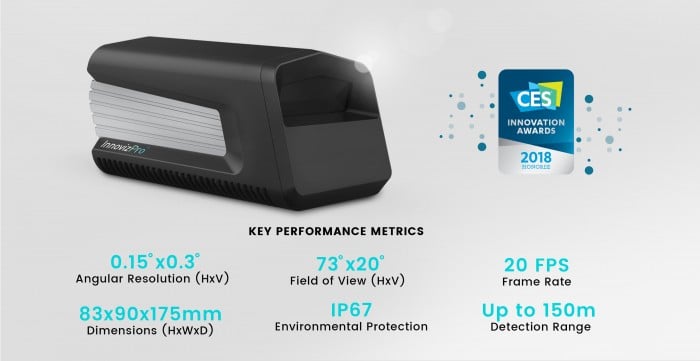
Innoviz LIDAR specifications from Innoviz.tech
Summary
As sensors continue to decrease in price, they will undoubtedly change the way we interact with our environments. The next few years should see visual sensor flooding the consumer space. Contact the companies discussed above to learn how you can incorporate an optical sensor into your next design.







